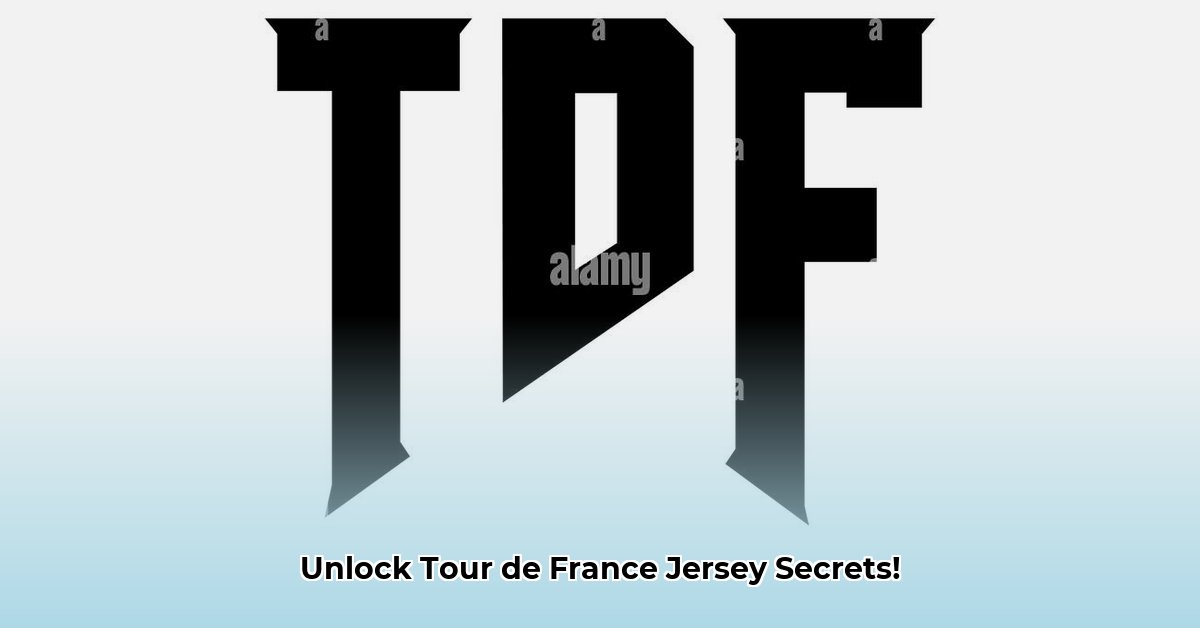
The Maillot Jaune: Chasing the Yellow Jersey Dream
The maillot jaune (yellow jersey) is the ultimate prize in the Tour de France, signifying the overall race winner. Awarded to the cyclist with the lowest cumulative time across all stages, it represents peak athleticism and strategic brilliance. Every second counts, making each stage a high-stakes battle. Legends like Eddy Merckx and Miguel Indurain have etched their names in history by donning this prestigious garment. But did you know that time bonuses awarded at certain stage finishes play a significant role? This adds a layer of complexity to the race, demanding a blend of raw speed and tactical nous.
Scoring System: A Ticking Clock
The yellow jersey is awarded based on the cyclist's cumulative time across all stages. Riders earn time bonuses for winning stages, adding another layer of competition. For example, the winner of a stage might be awarded a 10-second bonus, potentially shaking up the overall standings.
Historical Context: Giants of the Peloton
Eddy Merckx, widely regarded as one of the greatest cyclists of all time, boasts a record five yellow jerseys. Miguel Indurain's five consecutive wins (1991-1995) stand as a testament to unwavering dominance.
Current Trends: The All-Rounder's Reign
The rise of the “all-rounder” – cyclists who excel in sprints, climbing, and time trials – has redefined the race. Riders like Tadej Pogačar and Jonas Vingegaard showcase this evolution, proving that overall success demands well-rounded abilities rather than pure specialisation. This is dramatically changing how teams approach training and race strategy.
The Green Jersey: Speed Demons and Strategic Positioning
The green jersey, awarded to the points classification leader, celebrates sprinting prowess and strategic racing. It highlights the incredible bursts of speed needed to conquer sprint finishes and intermediate sprints during the stages. Peter Sagan, a five-time winner, is the current epitome of green jersey success, demonstrating the need for both raw power and tactical awareness.
Scoring System: A Sprint to the Finish
Points are awarded based on finishing positions in sprint stages and at intermediate sprints throughout the race. A stage win typically grants a significant number of points, while intermediate sprints offer smaller rewards. Therefore, consistent high finishes throughout the race rather than just big victories are crucial for securing the green jersey.
Historical Context: Sagan's Green Reign
Peter Sagan's seven green jersey wins (a record) showcases not only exceptional speed, but also remarkable consistency and strategic racing throughout multiple Tours.
Current Trends: The All-rounder's Impact
The rise of all-rounders is affecting the green jersey too. These riders, capable of both sprinting and performing well in other aspects of the race, pose a threat to dedicated sprinters.
The Polka Dot Jersey: King of the Mountains
The maillot à pois rouges (polka dot jersey) is the symbol of climbing prowess. Awarded to the rider with the most points accumulated at categorized mountain ascents, it celebrates incredible endurance and supreme power on the steepest slopes. Richard Virenque's dominance in the 90s exemplifies the unique skills this jersey requires.
Scoring System: Climbing Points Bonanza
Points are awarded based on the difficulty of the climb. Summit finishes and higher-ranked category climbs offer more substantial points than lower-ranked ones. This incentivizes riders to tackle the most challenging ascents throughout the race. Consequently, careful planning is crucial in determining which climbs to attack aggressively.
Historical Context: Virenque's Ascendance
Richard Virenque, a legendary climber, holds the record for most polka dot jerseys, highlighting the significance of specialized climbing skills in the race.
Current Trends: All-Rounders Changing the Landscape
While pure climbing ability remains crucial, all-rounders capable of competing for other jerseys are now serious contenders for the polka dot jersey, further highlighting the shift in race dynamics and training strategies.
The White Jersey: The Future of Cycling
The white jersey, awarded to the best young rider (generally under 26), offers a glimpse into the future of cycling. It celebrates the rising stars of the sport, showcasing their potential to become future champions. Tadej Pogačar's remarkable feat of taking both yellow and white jerseys recently underscores the ambition and talent present in the younger generation of cyclists.
Scoring System: Mirroring the Yellow
The white jersey is awarded to the best young rider based on overall general classification time, mirroring the scoring system of the yellow jersey. This means the competitive pressure is high, and these young riders need to compete with seasoned professionals.
Historical Context: Pogačar's Double Triumph
Tadej Pogačar's win in both the white and yellow jerseys in 2020, highlights the immense talent and potential coming through the ranks.
Current Trends: Young Guns Taking Center Stage
The success of young riders proves that exceptional talent and determination can lead to significant achievement—even at a young age—making this jersey a key indicator of future champions.
Conclusion: An Ever-Evolving Race
The Tour de France jerseys represent more than just colours; they symbolize dedication, strategic thinking, and the constant evolution of cycling. The rise of all-rounders continues to reshape the race, making the paths to securing each jersey increasingly intricate and exciting, promising a thrilling future for this iconic competition. The race, itself, is a constant dance of adaptation and innovation, reflected in the dynamic challenges presented to riders in pursuit of these prestigious symbols of achievement.